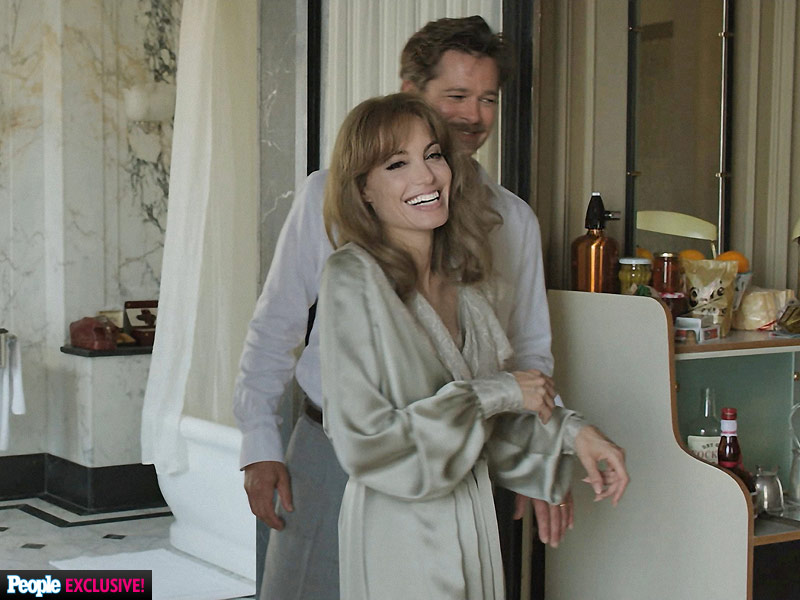Relationships are fascinating. Love is fascinating. The heartbreak and grief that often stem from these relationships and turbulent throws of love are fascinating, and so, too, are the internal mechanisms through which we cope with these feelings of loss and emotional discontent. Sadness is fascinating, selfish despair is fascinating, and witnessing characters overcome, or at least attempt to overcome, any form of melancholia is fascinating. Yes, sorrow is one of the most intriguing facets of the human experience, and the range of such self-despondency is virtually boundless. This sweeping, cognitive horizon and grand field of unsettled emotion is delicately explored in countless pieces of art, music, and literature, as well as in Angelina Jolie Pitt’s latest directorial and acting endeavor, “By the Sea.”
“By the Sea” is a story of love, loss, and, of course, heartbreak revolving around the marginally redeemable yet sweetly corroded marriage of Vanessa (Jolie Pitt) and Roland (Brad Pitt). These characters are introduced to us in a lovely opening sequence driving through gorgeous weather on the sea-side in a flashy little convertible, really setting the picture’s aesthetic tone of ‘70s glamor with the perfect mixture of rustic naturalism and urbanite chic. If it sounds too good to be true, it’s because it is. It’s almost too pretty, but its beauty sucks the viewer in and adds several dimensions to the greater, overarching story. Yes, the scope of beauty in this picture is not remotely similar to the amount of beauty found in real life, especially in toxic, overwrought relationships, but it is this magnitude of incredible visuals and dreamy shots that counterbalance the inner-ugliness of these characters, and an ugliness that we come to discover during their stay in a hotel that is, of course, by the sea.
When viewing this picture as an intense character study and dynamic relationship piece, Angelina Jolie Pitt has struck gold. When viewing it as a narrative or plot production, we’re just happy that we have all of the pretty pictures to look at. In either case, there is still so much to be enjoyed about the feature. The craft and execution of the immaculate scenery is quite extraordinary, as well as the inner dimensions of these broken characters and their relationships with fellow hotel dwellers (who also happen to be newlyweds) Lea (Melanie Laurent) and Francois (Melvil Poupaud). Poupaud does great work here, but this is definitely a standout performance for Laurent, who portrays Lea with a delightful yet sexy enthusiasm, with a brilliant charisma and delightful sensuality to top it off. At any rate, their interactions with Vanessa and Roland are complex character machinations, and ones that Ms. Jolie Pitt should applaud herself for. The weaved synergy between all four of these personalities exposes the multi-faceted, layered nature of these characters so smoothly, it’s as though Jolie Pitt concocted a gourmet character dinner for the viewers to indulgently feast their cinematic proclivities on. This really helps show, more than anything, the various sides to Roland and Vanessa. We see them at the best of their relationship, and the worst of their relationship within several, heart-wrenching moments because of the simple presence of the newlyweds next door, who remind them of a love that they don’t share. Though Vanessa and Roland definitely love one another, and care very much for each other’s being, it is not the same kind of passionate love that is so deeply shared between Lea and Francois.
Yes, “By the Sea” is a remarkable character piece, and one that reveals the human experience of grief, loss, and severe upset through a fearless intensity that draws the audience in by the fascinating character interactions. Though the picture may be viewed as a vanity piece, there is so much that connects it to the global human experience of grief and loss. Jolie Pitt definitely cements herself as the real deal in this feature, and I honestly can’t wait to see what she does next with other, more complex personalities.












